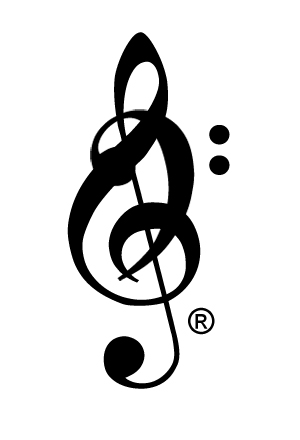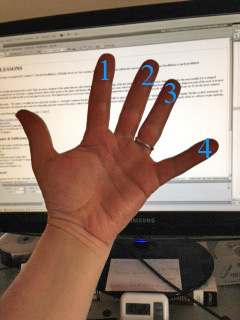 |
|
| HOME / BACKSTAGE |
| Previous Lesson |
Lesson Table of Contents
|
Next Lesson |
The guitar is one of the most versatile instruments in the world. It has many variations of acoustic, electric (electronic), and a blending of the two. From the beginnings of the lute family, the guitar comes in many shapes and styles but most notably it is a stringed instrument over a resonant body (or electronics-equipped body) which then speaks to the player and listener alike. In most cases, guitars come with frets in the fingerboard. Fingerboards may either be shaped as part of the neck or in most cases, it is an additional slab of relatively flat wood glued to the neck. Most fingerboards are rosewood, ebony, or maple. Certain manufacturers also use more exotic/rare woods but rosewood and ebony are by far the most common.

The guitar's versatility lies not only in the acoustic vs. electronic variations but also in the fact that it can readily be played as a melodic "lead line" instrument or as a chord comping "rhythm section" instrument. In many styles of modern music, the guitar fits into both roles depending upon the section of the music which is being played. The most common starting point of guitar enthusiasts is the learning of basic chords which we will now begin exploring.
First of all, the finger numbering scheme. While this might seem obvious, I show it here because it is different than a piano player (which count the thumb as 1). These numbers will be listed above the notes on the music staff. I typically do not write the finger number above the guitar tablature staff and instead, write the finger number above the notation (notes) staff. Zero (0) represents open strings.
For those that have never read music or those that once learned but need a refresher, we have provided a music notation primer.
Now the chords... The most popular "open chords" which guitar students first learn are G, C, D, Am, Em, Dm. These chords have made many people wealthy when used in combination (believe it or not). The following chord sheet contains four lines. The first line is the key of C. The second line is the relative minor and uses many of the same chords just in a different sequence and focus of attention. The second line is in A minor (short hand is written Am). The third line changes to the key of G and the fourth line is G's relative minor key, E minor (or Em).
You may strum on each line of these chords and make it sound like a song. The double bar lines and double dots represent the area in which you repeat. My best advice is to focus on fingering the notes as cleanly as possible without any buzzing among the group. You will also want to ensure that you do not touch the surrounding strings as this will dull and even mute the sound of the other strings. Pick each note independently to ensure clear and ringing sound.
The building blocks of a chord is individual notes. When individual notes are played together in a chord it sounds like a chorus of notes. Every note combination sounds unique be it a single note, two notes, three notes, four notes, etc... Sometimes the interval between the notes are close, sometimes far apart. The most common note intervals used in "pleasant sounding" chords are thirds and sixths. Stronger sounds are built in intervals of fourths, fifths, sevenths, and seconds. Other odd sounding chord combinations are tritone chords, diminished chords and augmented chords. Later, during the composition lessons, we will learn more about those special chords - where, why, and how they are used.
In the rock and metal music genre, you will encounter the following chords commonly referred to as "power chords".
The power chords consist of fewer notes which are better suited for extremely saturated (a.k.a. distortion) electric guitar signals. Meaning, these were "designed" for overdrive channel, hi-gain amplifiers such as Marshall, Mesa Boogie, Randal, Laney, Carvin X100B, etc.
Back to the basics... The aforementioned individual notes (also referred to as tones) are listed on page one of the following sheet. Also note, the finger numbers in the above photo is annotated above the staff. The zero (0) represents open strings.
These are again, the key of C, followed by Am, G, and Em. Each of these played in a sequence sound boring but when used in the appropriate manner can yield the sound of magic as you will soon see.
On page two, you will find a little more interesting lines which involve interval skipping by thirds (meaning from note 1 to note 3, down to note 2 then up to 4). Music is different than mathematics in that whenever you discuss the interval between notes you count the starting note and the ending note. Therefore, from note 1 to note 3 is the interval of a third (1, 2, 3 = 3 notes). On the other hand, if you were thinking in terms of mathematics you would say the notes are two values apart (3 - 1 = 2). Just remember in music to always count each note when evaluating the relationship between them. Later, when we discuss guitar solos and/or lead breaks, you will most likely play some melodies based on linear lines (page one of the scale sheet) and some melody variations involving intervals (page two of the scale sheet).
The following are more examples of preparatory scale patterns.
| Previous Lesson |
Lesson Table of Contents
|
Next Lesson |

Home / Terms / Privacy / Security / Contact / Help / Listen
Questions or Comments? Info@OtwellMusic.com
Copyright © Ⓟ 2024 Andrew T. Otwell/Otwell Music, LLC. All rights reserved.